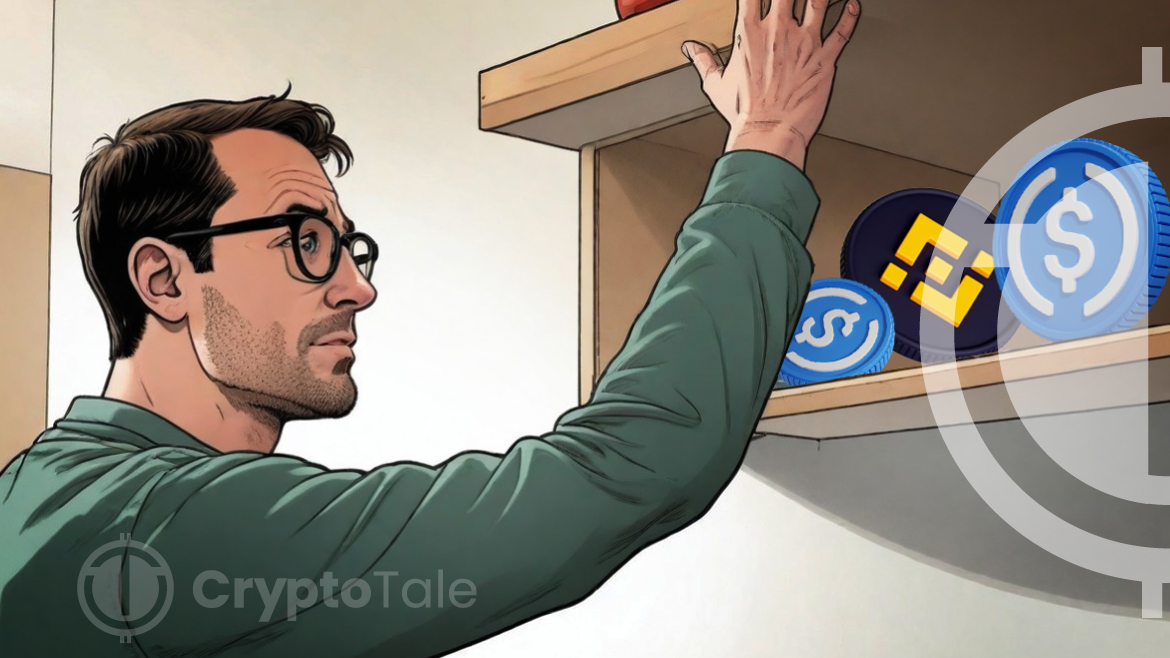
Binance, the world’s largest cryptocurrency exchange, has reallocated its Secure Asset Fund for Users (SAFU) entirely into Circle’s USD Coin (USDC). As of April 18, the fund’s composition now exclusively includes USDC, equating to approximately 3% of the stablecoin’s total circulating supply of $32.6 billion.
The exchange specified that all of SAFU’s assets, previously a mix of various cryptocurrencies, including Binance’s native BNB, Bitcoin (BTC), Tether’s USDT, and TrueUSD (TUSD), have been transferred to USDC. In the official announcement, the exchange wrote that USDC is a “trusted, audited, and transparent stablecoin,” prompting the conversion.
The conversion details, as recorded by Etherscan, include a transfer of 800 million USDC conducted at 02:35 UTC with a minimal transaction fee of $1.88. Additionally, the process involved transactions with other assets, specifically 1.36 million BNB valued at approximately $754 million and 16,277 BTC valued at $453.23 million.
According to lookonchain data, Binance initially withdrew the BTC and BNB on March 17, 2023, and November 9, 2022, respectively. The cumulative value of the assets at the time of withdrawal stood at approximately $998.5 million. Interestingly, the assets rose 76% post conversion to $1.75 billion as of April 18.
The primary goal behind the move is to improve SAFU’s reliability by maintaining its balance at a stable $1 billion. USDC is widely recognized for its stable value pegged directly to the US dollar and is considered a more reliable option compared to other stablecoins like USDT, particularly in terms of regulatory compliance.
USDC ranks as the sixth-largest cryptocurrency by market capitalization, currently standing at $32.4 billion. Binance’s BNB token holds the fourth position, with a market cap of $83.9 billion.
Previously, the SAFU fund included different cryptocurrencies whose values could fluctuate, affecting its overall stability. Speaking on the matter, Chris Holland, partner at HM, a Singapore-based compliance consultancy firm, told Bloomberg the conversion to USDC provides “certainty to the value of the fund in US dollar terms.”
SAFU was initially created in 2018 as an emergency insurance reserve to protect Binance users from potential losses arising from unforeseen events like exchange hacks, ensuring users could be compensated. This development is not the first alteration to the composition of SAFU; Binance previously adjusted the fund’s holdings in March 2023. The exchange replaced its Binance USD (BUSD) with Tether and TrueUSD, following regulatory pressures on the BUSD issuer Paxos.
Amidst this backdrop, Binance also recently announced the formation of a seven-person board. The board will be chaired by Gabriel Abed, the ambassador of Barbados to the United Arab Emirates. The move was followed by Binance.US, a separate entity, which recently appointed Martin Grant, a former chief compliance and ethics officer from the Federal Reserve Bank of New York, as the latest member to onboard its board of directors.














